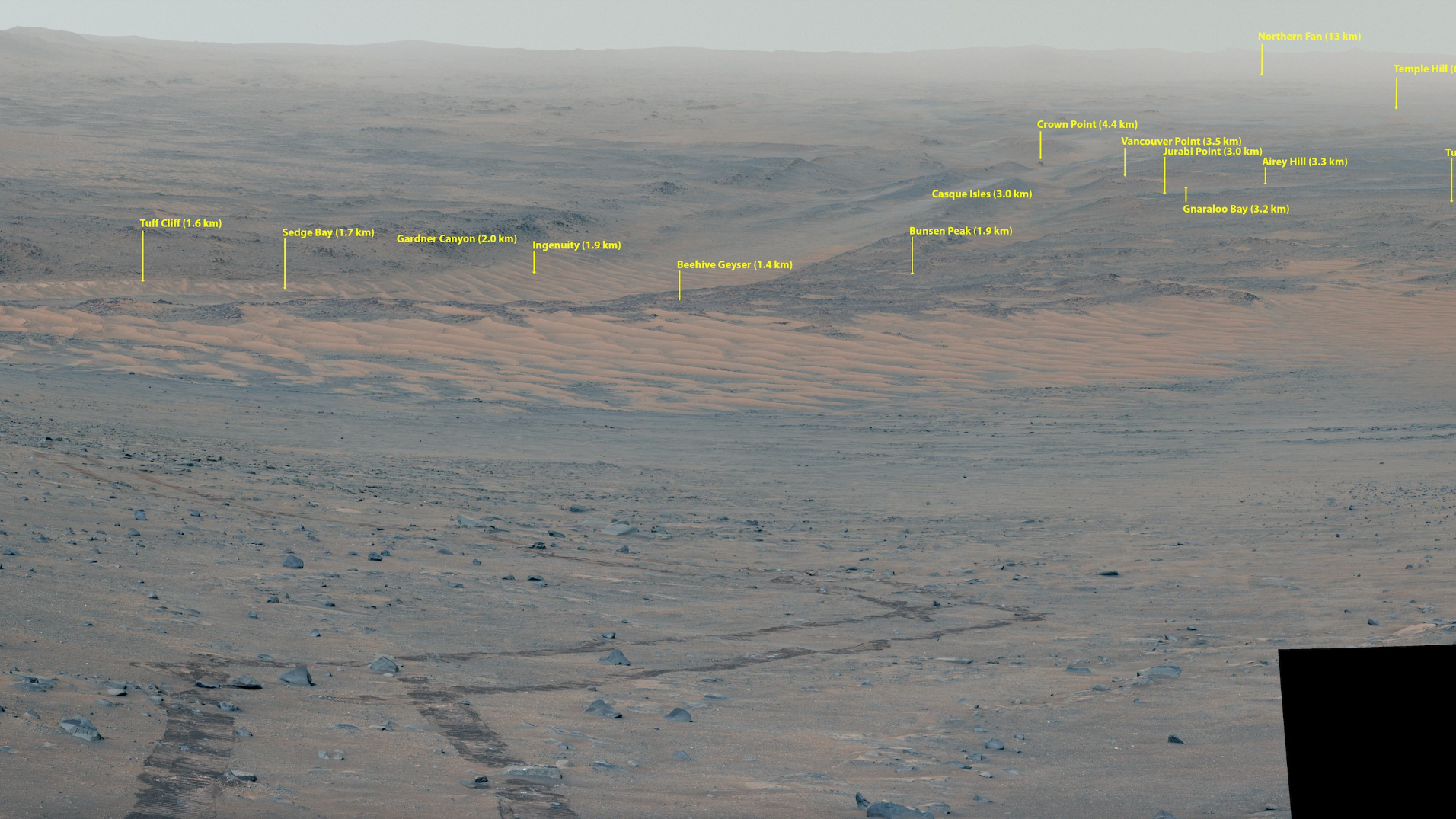NASA’s Perseverance rover recently took a break from its mountaineering expedition on Mars to study its old stomping grounds.
The car-sized Perseverance landed on the floor of the 45-kilometer-wide Jezero Crater in February 2021 to search for signs of past life on Mars and collect dozens of samples for future return to Earth.
Perseverance has completed its work in the Jezero Flats and is now climbing the crater’s western rim, en route to exploring new and disparate Martian landscapes. Late last month, however, the rover stopped to admire the awe-inspiring view of Jezero – and to share that view with its masters on Earth.

Mission team members stitched together 44 photos taken by Perseverance on September 27, creating a mosaic showcasing many of the sites explored by the rover.
“The image not only shows our past and present, but also shows the biggest challenge to getting where we want to be in the future,” said Perseverance deputy project manager Rick Welch of the Jet Propulsion Laboratory (JPL ) from NASA in Southern California. a statement on Monday, October 28, when NASA shared the new images.
“If you look at the right side of the mosaic, you start to get a sense of what we’re dealing with,” he added. “Mars didn’t want to make it easy for anyone to reach the top of that ridge.”
Perseverance began its ascent in mid-August. He took the featured photos while he was about halfway up the western rim, near a spot the mission team calls “Faraway Rock.” The rover is not expected to reach the summit until early December, however, as things are quite difficult.
The ridge Welch referred to has a slope of about 20 degrees, NASA officials said. It is also slippery, with loose sand and dust on a brittle crust.

“Mars rovers have driven on steeper and slipperier terrain, but this is the first time we’ve had to deal with both — and on this scale,” said JPL’s Camden Miller, a planner or “driver.” for the mission of Perseverance, said in the same press release.
“For every two steps forward that Perseverance takes, we take at least one step back,” added Miller, who also served as pilot for NASA’s Curiosity rover, which landed in Mars’ Gale Crater in 2012 and which is still active. “The rover planners saw that this was going to be a long and difficult job, so we got together to brainstorm some options.”

These options included driving the Perseverance six-wheeled backwards, taking a switchback-heavy “cross slope” approach, and staying close to the northern edges of the slope, which may contain larger, traction-enhancing rocks. buried in the nearby basement.
All three of these strategies have helped to some extent, but the northern boundary method seems to offer the best value, so the rover team will prioritize that one.
“That’s the plan for now, but we may have to change things later,” Miller said. “No Mars rover mission has attempted to climb a mountain this big and this fast. The science team wants to reach the top of the crater as quickly as possible because of the scientific opportunities up there. It’s up to us, the planners of the rover, to determine found a way to get them there.



